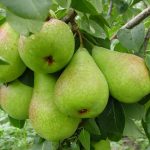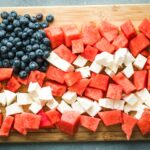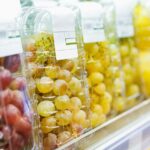Agronometrics in Charts: California Avocado Commission anticipating a 7% dip in avocado harvest

In this installment of the ‘Agronometrics In Charts’ series, Sarah Ilyas studies the state of the California avocado industry. Each week the series looks at a different horticultural commodity, focusing on a specific origin or topic visualizing the market factors that are driving change.
California Avocados are currently gracing the shelves of stores and will be featuring prominently on restaurant menus from now until early autumn. This year's harvest boasts avocados that are larger and greener. At the statewide level, the California Avocado Commission anticipates a decline of 7% in the overall yield of local growers when compared to the figures from the previous year.
Terry Splane, the Vice President of Marketing for the California Avocado Commission, attributes this decrease to the influence of winter and early spring rains. Although these rainfall events caused a delay in the commencement of the harvest, they proved to be highly beneficial for the overall health of California's avocado trees. Avocado grower Ivor Van Wingerden of Ocean Breeze Farms in Arroyo Grande added that the deluge “helped the avocados gain size more quickly, so California fruit is likely to be on average larger this year.”
The California Avocado Commission anticipates that Hass avocados will account for roughly 240 million pounds of the 257 million statewide pounds of avocados to be harvested this year. According to projections by the Hass Avocado Board, peak volumes are expected in week 22, at 12,770,400 lbs. 12,350,100 lbs are expected for week 23, and 11,641,800 lbs for week 24.
 Source: USDA Market News via Agronometrics.
Source: USDA Market News via Agronometrics.
(Agronometrics users can view this chart with live updates here)
Oversupply in the market has caused prices to fall. Week 21 saw prices at $32.56 per package, a 52% drop compared to 2022.
 Source: USDA Market News via Agronometrics.
Source: USDA Market News via Agronometrics.
(Agronometrics users can view this chart with live updates here)
 Source: USDA Market News via Agronometrics.
Source: USDA Market News via Agronometrics.
(Agronometrics users can view this chart with live updates here)
“The main challenge for the avocado industry at a global level is overproduction. We are producing more avocados than are being consumed,” says Emiliano Escobedo, Executive Director of the Hass Avocado Board. The median age of trees in production is decreasing and there are a lot of new plantations meaning that there will be an overproduction in the next couple of years.
“How are we going to grow demand, and turn light consumers into mediums, mediums into heavy, and heavies to super heavy, that is the challenge for the industry,” indicated Escobedo. To tackle this challenge, the industry is placing a high priority on focused marketing efforts. The Hass Avocado Board (HAB), for instance, has allocated a substantial budget of $75 million for assessments, which includes investment in research and promotional activities aimed at stimulating avocado consumption.
The California Avocado Commission (CAC) has also been diligently directing its efforts towards increasing demand through a range of strategic campaigns. In order to bolster the sales of California avocados, the commission is continuing its highly successful advertising campaign titled "the best avocados have California in them".
To effectively reach the target audience, CAC's consumer media program specifically caters to avocado shoppers residing in California and the Western region, particularly those who demonstrate a willingness to invest in premium brands and are classified as avid avocado consumers.
The media plans are thoughtfully designed to capitalize on the most effective channels and streaming services that yielded favorable results in the year 2022, in addition to incorporating social media and search advertising for comprehensive outreach.
Moreover, in collaboration with Chef Brooke Williamson, CAC will be commemorating California avocado month throughout the month of June. This partnership will further elevate the visibility and recognition of California avocados, contributing to the overall marketing and promotional efforts undertaken by the organization.
In our ‘In Charts’ series, we work to tell some of the stories that are moving the industry. Feel free to take a look at the other articles by clicking here.
All pricing for domestic US produce represents the spot market at Shipping Point (i.e. packing house/climate controlled warehouse, etc.). For imported fruit, the pricing data represents the spot market at Port of Entry.
You can keep track of the markets daily through Agronometrics, a data visualization tool built to help the industry make sense of the huge amounts of data that professionals need to access to make informed decisions. If you found the information and the charts from this article useful, feel free to visit us at www.agronometrics.com where you can easily access these same graphs, or explore the other 21 commodities we currently track.














































